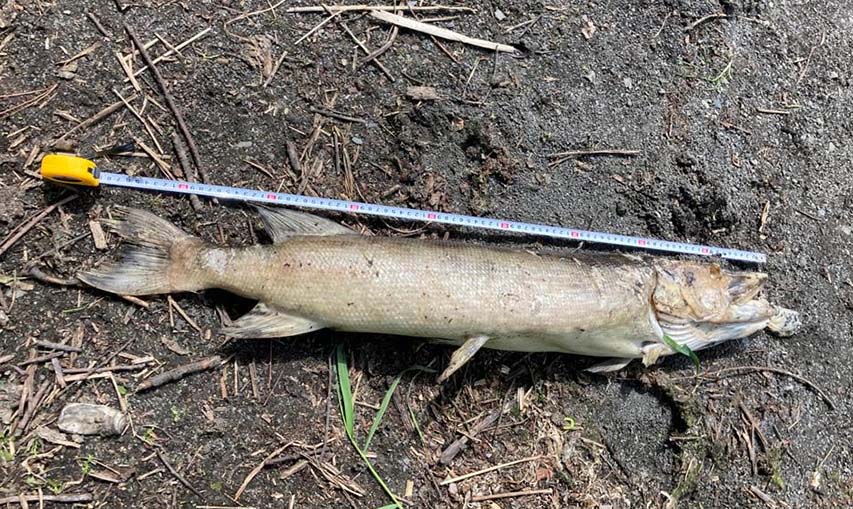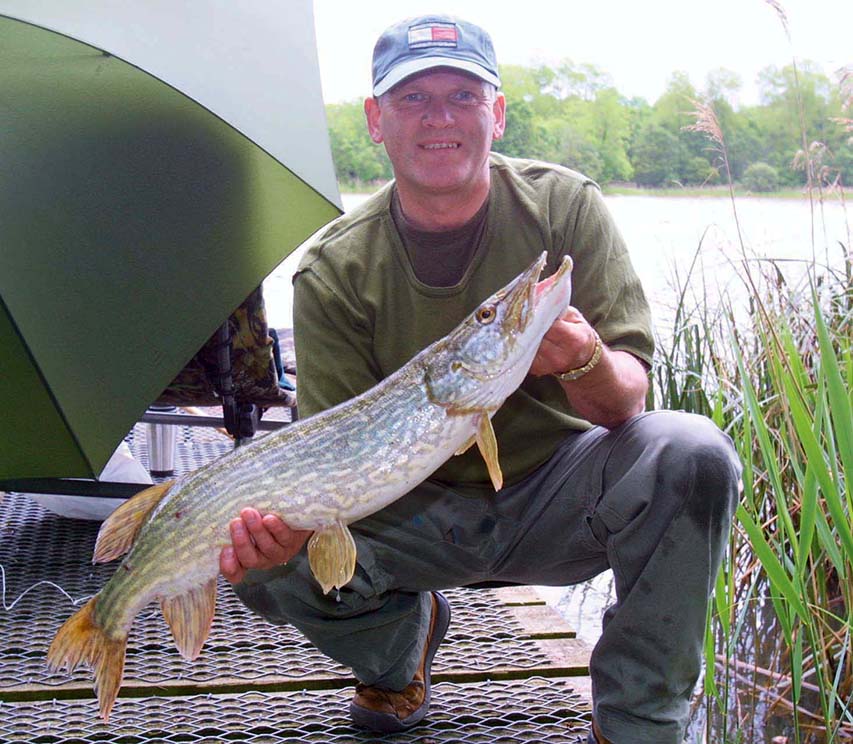Dead Pike In River Quoile Raises Alarm Bells
A dead pike found by local Downpatrick anglers has raised concerns about the state of the pike fishery in the River Quoile writes Jim Masson.
Once a thriving centre for pike angling, those green submarines are now caught far and few between, but the river does have a reasonable stock of rudd, roach, hybrids, perch and some eels which the anglers enjoy catching.
As pike spawn around Easter time, they take a few months to get back into condition. That is when they are at their most vulnerable and a good knowledge on how to hook, unhook and take care of a pike is essential if it is to be returned to the water safely to thrive and survive.
Members of the Quoile Angling Club, recently formed, believe the dead pike may be a result of a ‘poor experience’ in handling by an angler.

Club Chairman Eamonn McGrath said: “There are a number of key issues around the welfare of this top-of-the-food chain predator. Firstly, if an angler thinks a pike is taking their bait, they have to watch out for deep hooking. So it’s important not to let the pike swallow the sets of treble hooks usually used. This will result in deep hooking and it’s very difficult or impossible to get the hooks out of its gullet. So caution is needed. Deadbaits should not be left unattended on float or ledger.”
Also, Eamon McGrath explained it was important to get the pike landed as soon as possible so it is not exhausted. “Use a landing net. That way the pike is safe. However, you can chin the pike which takes experience by putting your fingers under its gills and lifting it up safely. A safety glove can be used for this. Be careful not to get your fingers caught in the treble hooks.
“Lay the fish on a proper unhooking mat and as quickly as possible unhook it. You will need a selection of tools to do this properly, given hooks can embed in jaws.
“Importantly you should use unbarbed hooks or flatten barbed hooks with your pliers while attaching your bait to make unhooking easier.
“In your unhooking toolkit you need a pair of short nosed-pointed pliers, and a long pair of these, and a set if wire snippers, and scissors. Be prepared for a few scratches or cuts especially if you are working round or behind the delicate gill rakers which can be sharp.

“Weigh the pike if you must but get it back into the water and hold it until it is capable of swimming off on its own. You can get recovery bags to place a caught pike in which are useful.
“Pike care is important as this fish helps maintain a health river fish stick and helps prevents imbalance and disease. So everyone fishing for pike, who has a coarse angling license from DAERA, needs to be aware of the responsibilities of the angler.
“Killing pike can ultimately impact of the fishery as a whole so it’s important to get to grips with pike care management from the start. If you are not sure, go out with an experienced angler or join the club. We will be organising training sessions down the line for coarse fishing.”
Club secretary Stephen O’Hare said: “There are a number of reasons why a pike may die from natural causes to poaching. Our worst fear was that this was another pollution incident which it appears not to be. Given that the dead fish which measured 89 centimetres and weighed approximately 8+ pounds was found at a popular fishing spot, suggests it is angling related.
“In the warm weather pike are more at risk. In England they have a closed season in most places. Perhaps we need to introduce a closed season here for a few weeks to give the pike a respite until they get back to form.
“The Quoile was once an excellent pike fishery. It would be great to see it come back again to its former state.”

























